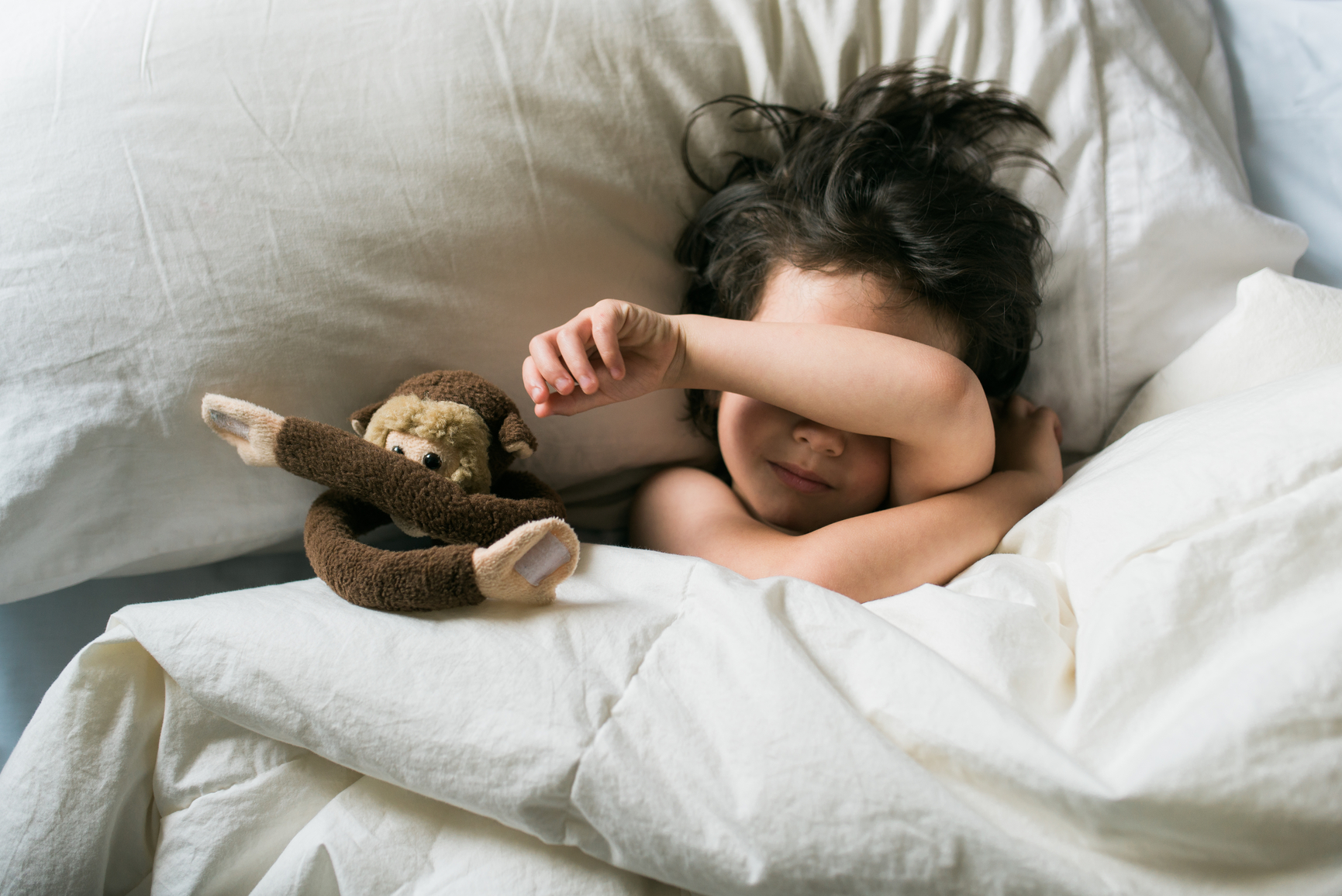It is important for parents to know that sleep disturbances are a normal part of development and are often more difficult for the parent than the child. During our typical phases of sleep, we all wake up momentarily and have “partial arousals”, it is at this point during sleep that our children can be susceptible to sleep disturbances such a night terrors, sleep walking and sleep talking. These type of sleep disturbances become prevalent beyond the age of two and seem to affect boys more than girls and are not indicative of an emotional disorder, but typically manifestations of a developing neurological system. Very often there can be a level of confusion between a night terror and a nightmare, but there is a clear distinction between the two.
A Nightmare
Nightmares also are a normal part of development and usually happen in the second part of the night time during REM or dreaming sleep. At least 25% of children from the age of 3-6 years report having at least one nightmare a week. This can be very alarming for a young child and the fear is very real. Typical nightmares involve being chased or stuck somewhere. Your child will require reassurance and comfort from you during and after a nightmare. It would be wise to avoid inadvertently exposing your child to scary or frightening images, programs or audio. Pick with care the type of books that you read at bedtime and be mindful of anything that may cause fear and anxiety for the young mind. Talk openly to your child about what disturbs them during the day time and try not to feed their fears by searching the house for monsters for example. Help your child develop a coping mechanism for any scary thoughts, like a magic wand or shield or bad thought spray to help keep them safe.
Consider the following ideas to help also:
1. If you are open it, consider allowing your child to share their bedroom with a family pet.
2. Encourage siblings to share a bedroom, provided that they have respect for one another’s sleep and personal space
3. Consider the wand | shield | spray to ward off scaries
4. Avoid stimulating activity before sleep time to include television, screen time, computer games
5. Avoid your child over-hearing or being exposed to anything that may cause anxiety
6. Examine the diet and eliminate any high sugar food items and vitamins close to sleep time
The Night Terror
This sleep phenomenon can be easily identified and usually will happen within the first few hours of sleep during non REM, deep sleep. In extreme cases, they can happen throughout the night and early in the morning. Your child would typically be inclined to wake with a start, wide eyes, frightened, screaming or shouting, with a racing heart and sweating. This is a partial arousal disorder and as a result your child is not really awake. They will not recognise you or realise that you are present. S/he may push you away and then want you to come back. Each episode can last up to 15 minutes. Your child will not remember the episode, but it can be very hard for us parents to see our children so distressed and that nothing appears to help calm them down. This is not representative of a psychological disorder and very often a symptom of being under slept. Achieving more sleep for your child, as little as 30 minutes extra, at bedtime can help to reduce and in some cases eliminate the night terrors completely.
Some useful recommendations for dealing with Night Terrors:
1. Don’t try to wake your child. There is no benefit in trying to rouse them as they are not really awake
2. Avoid or limit touching or picking your child up, as this can often prolong the terror
3. Sometimes singing gently can help
4. Ensure that your child is safe and cannot be hurt whilst thrashing about
5. When the episode is over, guide them back to bed if they are out of it
6. Stay, reassure and comfort them until they are calm or have gone back to sleep
7. Avoid discuss the night terror in the morning as your child will not remember the event
8. Consider an earlier bedtime. Young children require a bedtime somewhere between 6 and 8pm. Try to establish their natural sleep time.
9. Have a regular sleep and wake schedule for all the days of the week
10. Maintain a sleep diary that may help you to establish a pattern. If you can identify that the night terror happens at a certain time every night, then attempt to pre-empt the night terror, visiting their bedroom 15 minutes before it would normally happen, and gently rouse your child from their sleep, in an effort to break the cycle. This would need to be done over 10 or more nights for you to see a reduction in events.
If you are in any doubt about your child’s sleep disturbances, it is advisable to seek medical advice.



